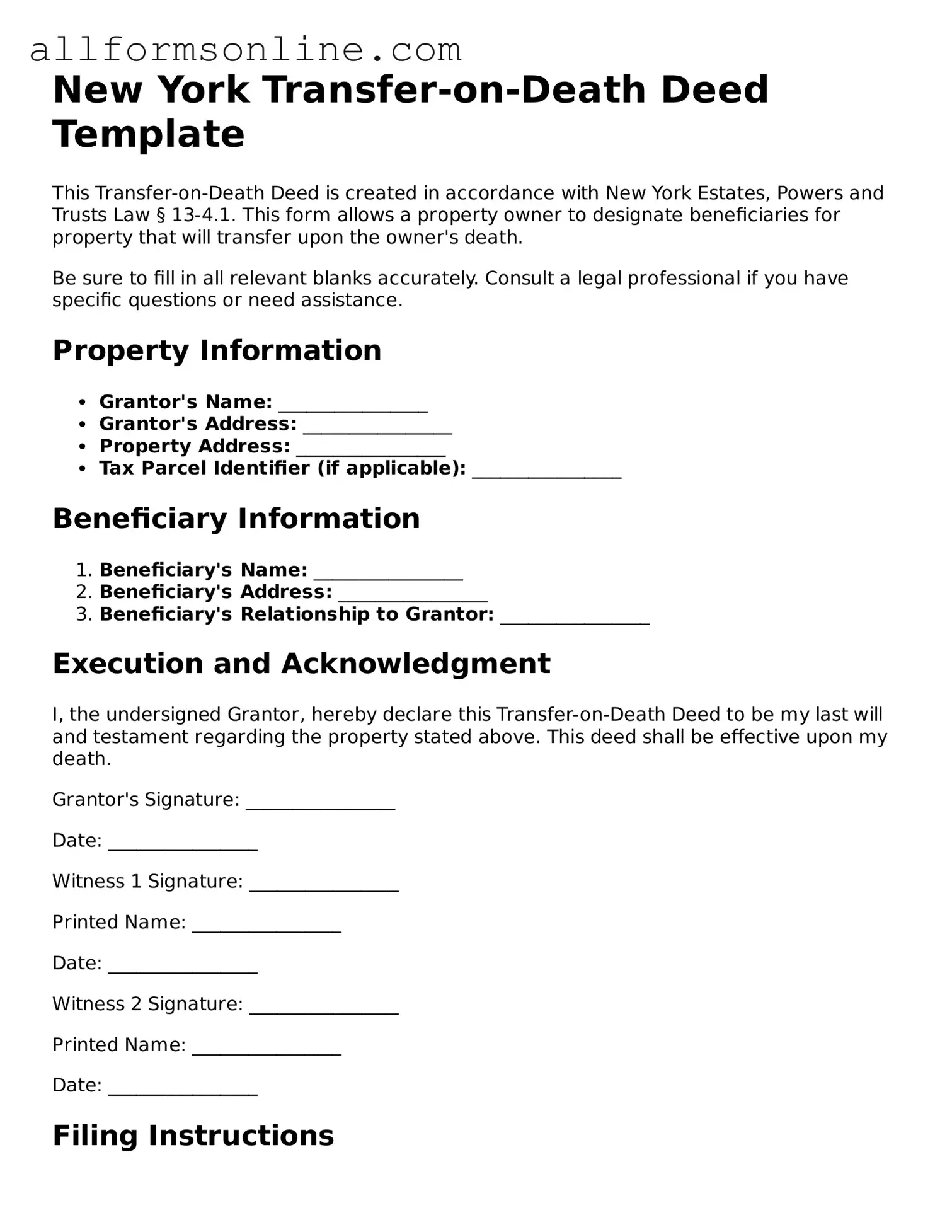What is a Transfer-on-Death Deed in New York?
A Transfer-on-Death Deed (TODD) allows property owners in New York to transfer real estate to a designated beneficiary upon their death. This legal document bypasses the probate process, making the transfer of property simpler and quicker for heirs. The property owner retains full control over the property during their lifetime and can revoke or change the deed at any time before their death.
Who can be a beneficiary in a Transfer-on-Death Deed?
Beneficiaries can be individuals, such as family members or friends, or entities, such as trusts or organizations. However, it is essential to ensure that the chosen beneficiary is legally capable of receiving property. If the beneficiary is a minor, it may be advisable to establish a trust to manage the property until they reach adulthood.
How do I create a Transfer-on-Death Deed?
To create a TODD, you must complete the appropriate form, which is available through New York state resources or legal document providers. The deed must include specific details, such as the property description and the beneficiary's name. After filling out the form, you must sign it in the presence of a notary public and file it with the county clerk's office where the property is located.
Can I revoke a Transfer-on-Death Deed?
Yes, a Transfer-on-Death Deed can be revoked at any time before your death. To do so, you must execute a new deed that explicitly states the revocation or file a formal revocation document with the county clerk's office. It is important to ensure that the revocation is properly documented to avoid confusion among heirs.
What happens if the beneficiary predeceases me?
If the designated beneficiary passes away before you, the property will not automatically transfer to them. Instead, it will typically go to your estate and be distributed according to your will or, if there is no will, according to New York's intestacy laws. To avoid complications, consider naming an alternate beneficiary in your TODD.
Are there any tax implications with a Transfer-on-Death Deed?
Generally, there are no immediate tax implications for transferring property through a TODD. The transfer occurs outside of probate, which can help avoid certain estate taxes. However, the value of the property may still be included in your estate for tax purposes. It is advisable to consult with a tax professional for personalized advice.
Is a Transfer-on-Death Deed suitable for all types of property?
A Transfer-on-Death Deed can be used for most types of real estate, including single-family homes, condominiums, and vacant land. However, it cannot be used for personal property, such as vehicles or bank accounts. For those assets, other estate planning tools, like wills or trusts, may be more appropriate.
Do I need an attorney to create a Transfer-on-Death Deed?
While it is not legally required to have an attorney to create a TODD, seeking legal advice can be beneficial. An attorney can ensure that the deed is properly executed and compliant with New York laws, helping to avoid potential issues in the future. If you have complex estate planning needs or significant assets, consulting with a legal professional is highly recommended.
